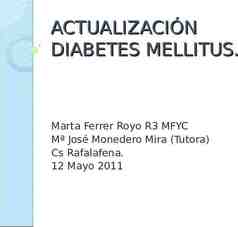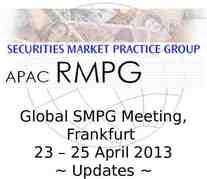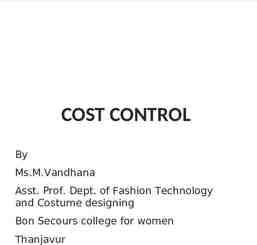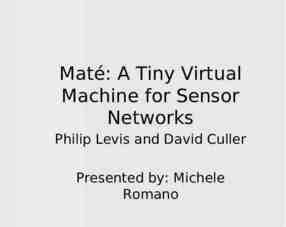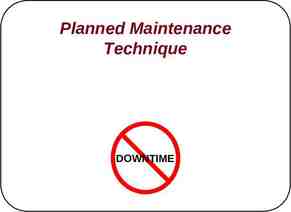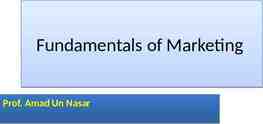YOU CAN’T COUNT THE APPLES IN THE SEED THE CHALLENGES OF A SHARED
45 Slides226.23 KB

YOU CAN’T COUNT THE APPLES IN THE SEED THE CHALLENGES OF A SHARED FUTURE James G. Neal Sixth North America-China Library Conference 31 July 2018

WHAT TRENDS ARE PROVOKING NEW THINKING ABOUT THE 21ST CENTURY LIBRARY? 2

WHAT IS PROVOKING NEW THINKING ABOUT THE 21ST CENTURY LIBRARY? Rapidly Shifting User Behaviors/Expectations Redundant Inefficient Library Operations Aging Service Paradigms Increasing Emphasis on Unique Resources Need to Achieve Scale and Network Effects Through Aggregation Acceleration of Collective Innovation 3

WHAT IS PROVOKING NEW THINKING ABOUT THE 21ST CENTURY LIBRARY? Mobility of User Assessment Cloud Computing Customization/Personal Web Semantic Web Economic Context Open Content Radical Collaboration Globalization E-Research Collective Intelligence Information Policy Online Education/MOOC Mutability The Internet of Things 4

AND NEW TECHNOLOGIES THE 21ST CENTURY LIBRARY Mobiles and Tablets (single, portable multi-purpose device) Cloud Computing (distributed processing and applications) Geo-Everything (geolocation and geotagging) Personal Web (customized management of online content) Linked Data (connecting and relating structured information) Semantic-Aware Applications (meaning to provide answers) Smart Objects (links physical world with information) Blockchain (cryptocurrencies, credentialing, enhanced metadata) 5

AND NEW TECHNOLOGIES THE 21ST CENTURY LIBRARY Open Content (wide distribution and repurposing) MOOC (massive open online courses) Electronic Book (platforms, applications, redefinition) Data/Big Science (research information management) Games As Learning Tools (participation and interaction) Visualization and Simulation (more meaningful and intuitive) 3-D Printing 6

DO 20TH CENTURY VISIONS AND SKILLS STILL MATTER? 7

DO 20TH CENTURY SKILLS STILL MATTER? Information Selection Information Interpretation Information Acquisition Information Understanding Information Synthesis Information Use Information Navigation Information Application Information Dissemination Information Archiving In Support of Teaching and Learning In Support of Research and Scholarship 8

ARE NEW SKILLS NEEDED FOR CHANGING LIBRARY ROLES? Libraries as Consumers Libraries as Intermediaries and Aggregators Libraries as Publishers Libraries as Educators Libraries as R&D Organizations Libraries as Entrepreneurs Libraries as Policy Advocates 9

WHAT IS THE LIBRARY ROLE IN BUILDING THE NATIONAL/GLOBAL DIGITAL LIBRARY? 10

BUILDING THE DIGITAL LIBRARY QUALITY CONTENT FUNCTIONALITY Published/Licensed Content Primary Content Open Web Content Institutional Content Research Data Content Multimedia Content Integrated Services Software Tools 11

PRESERVE AND ARCHIVE THE CONTENT Archive as Repository HOLD Archive as Persistence ACCESS Archive as Curation SECURE Archive as Steward CARE Analog Digital Conversion Born Digital Disaster Preparedness 12

BORN-DIGITAL CONTENT AND ISSUES OF SCHOLARLY INTEGRITY Ability to Consult Evidence/Sources Ability to Pursue Research Study When Primary Sources Gone/Changed Repository Chaos/Research Study Deposited and Accessed in Multiple Sites Integrity: adherence to code or standard of values complete and unimpaired and undivided 13

BREADTH AND DIVERSITY OF BORN-DIGITAL CONTENT Licensed/Published Works (E-Journals, E-Books) (Commercial, Academic, Independent, Self-Publishing) E-Video and E-Audio Digital Government Online Learning Materials Research Data Social Media E-Archives (Personal Papers, Organizational Records) Web Sites and Web Documents 14

BREADTH AND DIVERSITY OF BORN-DIGITAL CONTENT Visual Images Spatial Data (Longitudinal Observations) Software/Applications (Proprietary, Open Source) Video Games Medical Data (Personal Health Records) Live Feeds (RSS, News) Visualizations/Simulations Interoperable Metadata (MARC, BIBFRAME, schema.org) 15

ADVANCE THE REPOSITORY MOVEMENT Discipline Repositories Institutional Repositories Community Repositories Data Repositories Departmental/School Repositories Individual Repositories Learning Repositories Government Repositories National Repositories Publisher Repositories Research Data Repositories THE RIGHT TO TEXT AND DATA MINE 16

DIGITAL LIBRARIES SOME META ISSUES Massive Surveillance Security Meltdowns Network Neutrality Corporate Control 17

HOW DO WE ALIGN WITH THE “HUMAN” OBJECTIVES OF OUR USERS? HOW ARE WE ESSENTIAL TO THE COMMUNITIES WE SERVE? 18

WHERE DO WE INTERSECT WITH USERS? Physical Spaces Laboratory Web Spaces Bedside Collections Collaborations Services Anyone Applications Anywhere Technologies Anytime Classroom Anyhow 19

HOW DO WE KNOW ABOUT USERS? Ask Experiment Measure Involve Listen Prototype Observe Portfolio Compare Evaluate Benchmark Experience (Aha) 20

RESPOND TO USER EXPECTATIONS Content Access Convenience New Capabilities Cost Reduction Participation Individual Productivity Individual Control Organizational Productivity 21

EMBRACE THE “HUMAN” OBJECTIVES Success (turn out well, attain desired end) Happiness (well-being and contentment) Productivity (achieving results or benefits) Progress (forward movement or betterment) Relationships (personal connections or attachments) Experiences (observation or participation) Impact (significant effect) 22

PREPARE FOR ACCOUNTABILITY AND ASSESSMENT Institutional Expectations Government/Funder Mandate Measures Of User Satisfaction Measures Of Market Penetration Measures Of Success Measures Of Impact Measures Of Cost Effectiveness System Design For Usability Insanity of Most ROI Tyranny of Metrics 23

HOW ARE WE ESSENTIAL T0 OUR COMMUNITIES AND DECISION MAKERS? Student /Citizen Success Faculty/Researcher Productivity Campus/Community Economy Institutional/Community Values University/Community Reputation VIRTUAL/VIRTUOSO/VIRTUOUS 24

HOW CAN WE CREATE ORGANIZATIONS MORE ORIENTED TOWARD RESEARCH AND DEVELOPMENT ENTREPRENEURIAL INITIATIVE STRATEGIC THINKING AND ACTION? 25

SETTING THE R&D AGENDA INDIVIDUAL INTEREST PROFESSIONAL IMPORTANCE R&D AGENDA ORGANIZATIONAL PRIORITY NATIONAL NEED 26

MARKET THE LIBRARY Match Capabilities of an Organization with Needs and Wants of Communities Served Existing Products to Existing Markets MARKET PENETRATION Existing Products to New Markets MARKET EXTENSION New Products for Existing Markets PRODUCT DEVELOPMENT New Products for New Markets DIVERSIFICATION 27

WHAT ARE SOME PLANNING CHALLENGES? Too much planning and too little strategic thinking. Existing structures and processes built for slower pace of change. Program planning not linked to institutional strategic planning. Resource allocations not linked to strategies. Planning cycles expenditure-based rather than strategic. Absence of accountability. Planning does not drive organizational performance. 28

WHAT IS THE POLITICAL AND ADVOCACY ROLE OF THE LIBRARY? 29

ADVOCATE THE INFORMATION POLICY AGENDA INTELLECTUAL FREEDOM INTERNET DEVELOPMENT PRIVACY TELECOMMUNICATIONS CIVIL LIBERTIES GOVERNMENT INFORMATION EDUCATION PROGRAMS APPROPRIATIONS RESEARCH PROGRAMS WORKFORCE POLICY FIGHTING THE COPYRIGHT WARS HOPE/POWER/ACTION THROUGH COLLABORATION 30

POLITICAL ADVOCACY THE LIBRARY ROLE Knowledgeable Resources for the Community Political and Legislative Advocates for Community Interests Educators of Community on Priority Issues Documenters of Impact of Legislative Actions Promoters of Campus and Community Coalitions Enablers of Successful Models Which Support Political Agenda 31

WHAT ARE THE IMPLICATIONS FOR STAFF EXPERTISE ORGANIZATIONAL STRUCTURE LIBRARY CULTURE? 32

SCHIZOPHRENIC ORGANIZATIONAL MODELS IN LIBRARIES Conventional Administrative Hierarchy and Consultative Governance/Bureaucracy Centralized Planning and Resource Allocation Systems and Loosely Coupled Structures and Maverick Units and Entrepreneurial Enterprises 33

RANGE OF ORGANIZATIONAL CHARACTERISTICS Centralization and Decentralization Hierarchy and Distribution Bureaucracy and Adhocracy Complexity and Simplicity Formality and Informality Administration and Entrepreneurship Authority and Collaboration 34

WHAT ARE THE IMPLICATIONS FOR LIBRARY STAFFING? Professionals With Diverse Academic Backgrounds Wide Range of New Professional Assignments New Roles of Support Staff and Students Messy/Fluid Organizational Structures Impact on Values, Outlooks and Styles Impact on Campus Understanding, Recognition and Respect Impact on Organizational Relevance and Impact 35

CAPABILITIES OF THE 21ST CENTURY LIBRARY INFORMATION PROFESSIONAL Deep Subject, Process, or Technical Expertise Deep Service Commitment Commitment to Research and Development Commitment to Assessment and Evaluation Communication and Marketing Skills Project Development and Management Skills Political Engagement Resource Development Skills Commitment to Rigor Entrepreneurial Spirit Commitment to Collaboration Commitment to Social Justice Leadership/Inspirational Capacity 36

FUTURE LIBRARY PROFESSIONAL Clear Sense of Mission Self Vision Base of Knowledge Strategic Positioning Continuous Improvement Strong Professional Voice 37

HOW DO WE ADVANCE FROM THE KUMBAYA OF COOPERATION TO MORE RADICAL COLLABORATION AND SYSTEMIC PARTNERSHIPS? 38

FORUMS FOR COOPERATION Library Systems Researcher Collaboration Local and Regional Cooperation Publisher Collaboration State Projects Collaboration with Technology Organizations Multi-State Projects National Consortia/Projects Corporate Partnerships Business Partnerships International Partnerships REACHING OUT TO CULTURAL COMMUNITY PROMOTING NEW COMBINATIONS THRU PUBLIC-PRIVATE PARTNERSHIPS 39

RADICAL COLLABORATION Centers for Excellence Mass Production New Infrastructure New Initiatives Quality/Productivity/Innovation 40

WHAT DO WE MEAN BY LIBRARY INNOVATION LEADERSHIP TRANSFORMATION IN THE CONTEXT OF TURMOIL? 41

WHAT IS LEADERSHIP? Setting a direction. Hiring and developing really great people. Securing the resources. Asking the hard questions. Advancing a professional voice. Just getting out of the way!! 42

WHAT DO WE MEAN BY INNOVATION? new method, idea or product systematic application of new knowledge to new resources to produce new goods or new services MARKET process of lowering the costs or increasing the benefits of a task VALUE result of thinking deliberately about existing problems and unmet needs SOLUTIONS EVOLUTIONARY (incremental) REVOLUTIONARY (disruptive/discontinuous) 43

WHAT DO WE MEAN BY TRANSFORM? to change in composition or structure WHAT WE ARE/WHAT WE DO to change the outward form or appearance HOW WE ARE VIEWED/UNDERSTOOD to change in character or condition HOW WE DO IT 44

WHERE ARE WE GOING? RELEVANCE IMPACT VALUE SURVIVAL EXTINCTION PHYLETIC - one species evolves into another TERMINAL - termination of species/no descendants 45

